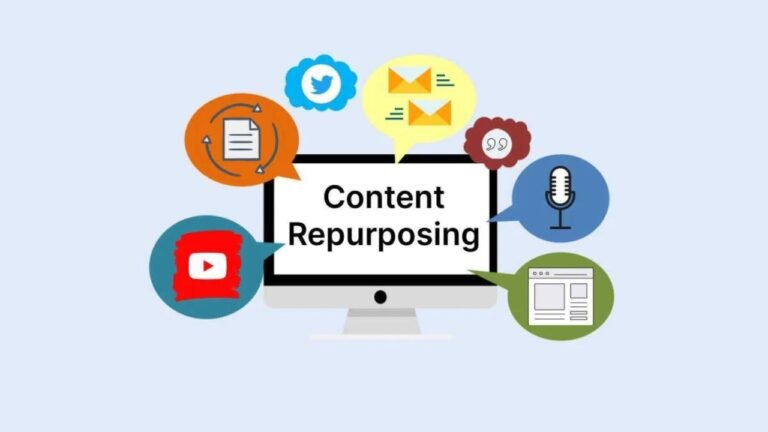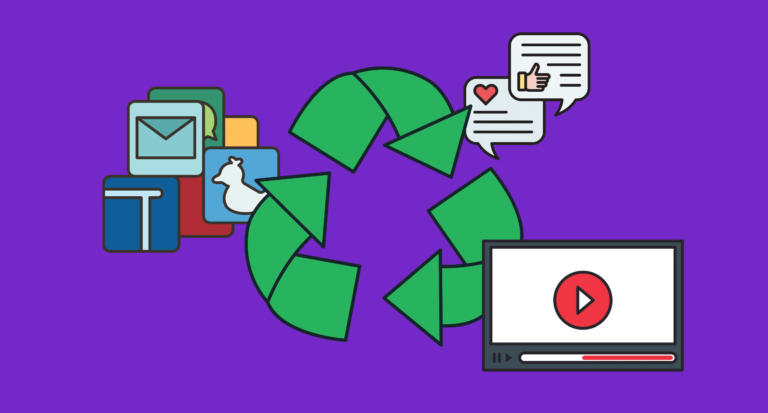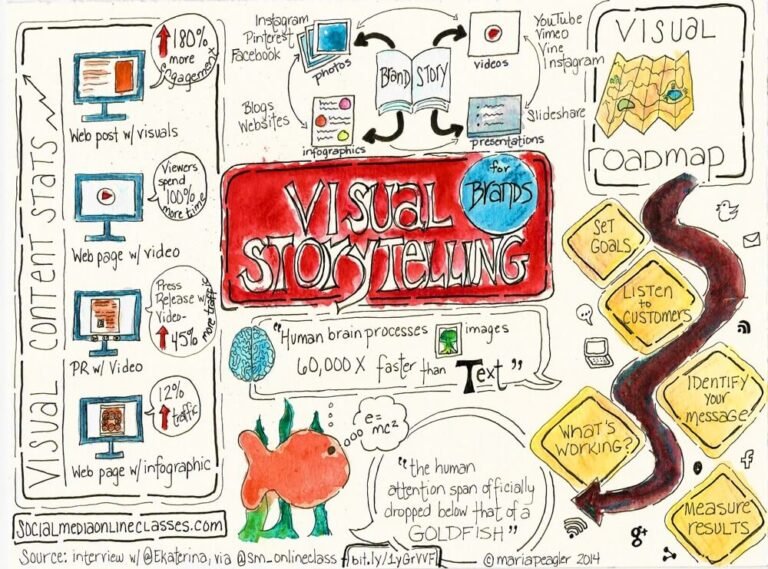Battling Bloggers Block: 7 Techniques to Overcome Writer’s Block
Actionable tips (like mind mapping, free-writing, etc.) to help content creators consistently generate ideas and write with ease. (Evergreen)
Starting a blog can be an exhilarating journey filled with creative expression and meaningful connections with your audience. However, even the most prolific content writers encounter moments when their creative well runs dry.
Whether you’re a seasoned freelance writer or preparing to write your first blog post, writer’s block is a universal challenge in the content creation process that can hinder your content strategies.
The frustration of staring at a blank screen, struggling to transform your content idea into a compelling piece of content, can be overwhelming. But don’t worry – this is a common hurdle that every successful blog creator faces on their path to building a vibrant online presence.

In today’s digital landscape, where content marketing drives engagement and builds brand awareness, the ability to consistently create content that resonates with your audience is invaluable. The type of content you produce and share can significantly impact your blog’s growth trajectory. Quality content isn’t just about filling pages; it’s about crafting material your audience wants to read, material that provides value and keeps them coming back for more.
This guide offers seven proven techniques to help you overcome writer’s block, ensuring that your content creation flows smoothly and your content marketing strategy remains on track, allowing you to write and publish consistently.
Content Writing: Understanding the Root of Writer’s Block
Before diving into solutions, it’s important to understand what causes writer’s block. Often, it stems from perfectionism – the pressure to create the best content on your first attempt. Other times, it might be due to fatigue, lack of inspiration, or uncertainty about what your audience wants to achieve by reading your post. Recognizing these barriers is the first step in the writing process. Content writing isn’t always a straight path; sometimes it requires exploration and patience before you find your flow.

As a content writer, remember that not every piece of content needs to be revolutionary; sometimes, simply publishing content is enough. Sometimes, sharing your content across different platforms can help you gauge what type of content works best. Traffic to your blog will grow as you consistently produce new content, experimenting with different content types and observing which posts generate more engagement. This learning process is an essential element of your blog development.
Blog Posts: Choosing Topics That Spark Creativity
When you want to write but feel stuck, sometimes the issue lies in the blog topic itself. The best blog posts often emerge from subjects you’re genuinely passionate about. Consider what makes your personal blog unique and what expertise you bring to the table. Creating a list of blog post ideas in advance can provide a safety net for times when inspiration is scarce.
Guest posts can also offer fresh perspectives and help you learn how to write in different styles. By inviting others to contribute to your blog, you not only ease your content creation burden but also diversify your blog’s voice. Additionally, reading other blogs in your niche can spark new ideas and show you different approaches to similar topics. Every post you write should aim to add value, whether through information, entertainment, or solving a problem for your readers.

WordStream
Start a Blog: Setting Realistic Expectations
Many new bloggers burn out because they set unrealistic expectations. When you first start a blog, it’s easy to compare yourself to established content creators who publish multiple times per week. However, sustainable blogging begins with realistic goals. Perhaps commit to one post per week until you establish a rhythm that works for your schedule and creative energy.
Starting a new blog requires patience and persistence, especially when deciding on a name for your blog that reflects your vision. It’s not just about the content creation process but also about promoting your blog and building an audience. Before you share your content on social media or other platforms, ensure that your content meets basic quality standards.
A blog requires consistent attention, both in terms of creating new blog posts and maintaining what you’ve already published. If you want to create a sustainable blogging practice, pace yourself and celebrate small victories along the way.

Content Marketing: Strategic Approaches to Consistent Creation
Effective content marketing goes beyond sporadic posting; it requires a coherent strategy that aligns with your overall goals. Whether you want to achieve brand recognition, generate leads, or establish authority in your field, your content should serve these objectives. Marketing strategies that incorporate regular blogging tend to see better results than those that treat content as an afterthought.
Building a successful blog involves more than just writing skills; it requires understanding your audience and the topics they find valuable. As you start building your content library, consider creating a content calendar that includes diverse content types – tutorials, opinion pieces, case studies, and more.

This variety not only keeps your audience engaged but also helps you discover which different types of content you enjoy creating most. The best practice is to plan ahead while remaining flexible enough to adapt to trending topics or sudden inspiration.
Write a Blog: Seven Proven Techniques to Overcome Writer’s Block
Now, let’s explore seven actionable techniques that will help you write blog posts with greater ease and consistency, ultimately enhancing your ability to publish content. These writing tools aren’t just theoretical concepts; they’re practical approaches that successful bloggers use to ensure your blog remains active even when inspiration seems elusive, helping you write an article that engages readers.
1. Mind Mapping: Organize Your Thoughts Visually
When you want to write but feel overwhelmed by scattered ideas, mind mapping can help you organize your thoughts. Start with your main topic in the center of a page, then branch out with related concepts, examples, and supporting points to outline your blog writing effectively. This visual technique helps you see connections between ideas and often reveals new angles you hadn’t considered before. Many content writers find that this approach helps them outline post content more effectively than linear note-taking, which is vital for writing great blog posts.
2. Free-Writing: Bypass Your Inner Critic
Sometimes the best way to overcome writer’s block is to simply start writing without concern for quality or structure. Set a timer for 15 minutes and write continuously about your topic without stopping to edit or second-guess yourself. The goal isn’t to create a publishable piece but to get your thoughts flowing. Later, you can refine this raw material into a cohesive blog post that captures everything you need to know about your topic. This technique is particularly useful when you’re writing your first blog post for a new blog.
3. Change Your Environment: Refresh Your Perspective
Your physical environment significantly impacts your creativity. If you’re stuck, try relocating to a café, park, or even a different room in your home. The change of scenery can stimulate new thoughts and help you write a post with renewed energy. Some bloggers even create dedicated spaces solely for content creation, training their brains to associate these areas with productive writing sessions.
4. Interview Your Ideal Reader
Imagine sitting across from someone who represents your target audience. What questions would they ask about your topic? What concerns would they raise? By mentally interviewing this persona, you can generate content that directly addresses their needs. This exercise helps ensure that your content resonates with the people you want to reach, increasing the likelihood they’ll want to read your posts.
5. Repurpose Existing Content
Look at your previous blog posts or other content you’ve created. Could you approach the same topics from a different angle? Perhaps a how-to post could be transformed into a case study, or a listicle could become an in-depth guide. Sometimes, the content you need to write already exists in another form, waiting to be reimagined and expanded. Repurposing helps you grow your blog while building upon established topics your audience already finds valuable.
6. Set a Consistent Schedule
Make your content creation process more routine by designating specific times for writing. When you train yourself to write at the same time each day or week, your brain becomes conditioned to enter a creative state during those periods. This best practice reduces the friction that often leads to procrastination. Many bloggers find that morning writing sessions, before the day’s distractions begin, are particularly productive for creating new content.
7. Use the “Terrible First Draft” Technique
Give yourself permission to write a terrible first draft. The pressure to create great content on the first attempt often paralyzes writers. Instead, acknowledge that your initial draft will be imperfect—perhaps even bad—and that’s okay; it’s part of writing your blog post journey. The real magic happens during revision, where you can enhance your initial draft into a polished post on your blog. This mindset shift can free you to get words on the page, making it easier to start writing and overcome the initial hurdle of blogger’s block.
Make Your Blog: Building Systems for Continuous Inspiration

Beyond these techniques, successful bloggers develop systems that ensure they never completely run out of ideas. Creating an idea repository—a document or app where you store potential topics, interesting quotes, statistics, or observations—can provide a safety net for days when inspiration is scarce. Some bloggers even create a series of blog posts around a central theme, providing structure and direction for multiple pieces of content.
To make your content consistently valuable, consider setting up content feedback loops. Ask readers what they’d like to see more of, monitor comments for questions that could become future posts, and analyze which posts generate the most engagement. These insights can help you ensure your blog remains relevant and interesting to your audience over time. The most successful blog creators understand that inspiration isn’t just about waiting for a muse; it’s about creating systems that generate ideas continuously to write content effectively and keep your blog to make an impact.
Write Blog Posts: Developing Your Unique Voice
As you continue to write blog posts, focus on developing your unique voice. Readers aren’t just looking for information; they’re connecting with the person behind the words. Your authentic perspective is what will differentiate your blog from countless others covering similar topics. If you’re wondering how to write in a way that feels genuine, try recording yourself speaking about your topic, then transcribe and refine those thoughts. This technique often captures your natural communication style.
The writing process gets easier with practice. Many bloggers report that after publishing 10-20 posts, they find their rhythm and voice. If you want to create compelling content consistently, commit to regular practice even when it feels challenging; it’s crucial for those looking to start a business. Reading your post aloud before publishing can help you ensure it flows naturally and sounds like you.

Remember that every piece of content you publish is an opportunity to refine your voice and connect more deeply with your audience.
Want to Read: Creating Content That Captivates Readers

Kidlit
Ultimately, the goal of overcoming writer’s block isn’t just to produce more content—it’s to create material people want to read. Consider what draws you to the blogs you follow regularly. Is it the writer’s unique perspective? Their ability to explain complex topics simply? Their engaging storytelling? Incorporate these elements into your own content creation.
A post title can make or break reader engagement, so spend time crafting headlines that promise clear value. Similarly, your introduction should quickly establish why the reader should continue. Throughout your post, use formatting techniques like subheadings, bullet points, and short paragraphs to make your content easily scannable. Remember that online readers often skim before deciding to read thoroughly, so make your content accessible at a glance.
Grow Your Blog: Beyond Content Creation
While consistent writing is essential, growing your blog requires more than just regular posting. You’ll need to promote your content through various marketing strategies, including social media promotion, email newsletters, and possibly paid advertising. As you share content across different platforms, you’ll learn which channels drive traffic to your blog most effectively.
Building a community around your blog can also help you generate ideas and overcome writer’s block. When readers comment and engage with your posts, they often raise questions or perspectives that spark new content ideas, enriching your writing your blog post. Some bloggers even turn their most active commenters into guest contributors, creating a symbiotic relationship that benefits everyone involved. A thriving blog requires both quality content and an engaged community that feels invested in its success.

Positive Provocations
Promote Your Blog: Maximizing Your Content’s Reach
Once you’ve created great content, ensure it reaches as wide an audience as possible to maximize your blog’s potential for generating money from a blog. Each time you publish a new blog post, have a promotion plan ready. This might include scheduling social media shares, sending an email to your subscribers, or reaching out to other bloggers who might find your content valuable. The more eyes you get on your content, the more motivation you’ll have to continue creating.
Cross-promotion can be particularly effective. Link to your blog from your other online presences, and look for opportunities to mention relevant posts in comments or discussions elsewhere.
Some content writers even repurpose their blog content into other formats—turning posts into videos, podcasts, or infographics—to reach audiences who prefer different media types.
The key is to ensure that your blog gets the visibility it deserves after you’ve put in the work to create quality content.

Get Your Blog: Technical Considerations
While this article focuses primarily on overcoming creative blocks, technical issues can sometimes impede your blogging progress too. If you’re just starting, choose a reliable platform that won’t create unnecessary friction in your publishing process. Many successful blogs start on user-friendly platforms like WordPress or Medium before transitioning to more customized solutions as they grow.
Ensure your blog loads quickly and displays properly on mobile devices, as poor user experience can discourage readers no matter how good your content is. Similarly, implement basic SEO practices to help new readers discover your content through search engines. These technical elements support your creative work by removing barriers between your content and potential readers. Remember to name your blog something memorable and relevant to your content focus, making it easier for readers to find and recommend you.

BlendB2B
Best Content: Quality Over Quantity
While consistency matters, quality ultimately determines your blog’s success. It’s better to publish one outstanding post per month than four mediocre ones. The best content provides unique insights, solves real problems, or entertains in a memorable way. When you’re feeling blocked, focus on creating one exceptional piece rather than forcing yourself to meet an arbitrary publishing schedule.
To ensure your blog maintains high standards, establish a pre-publishing checklist. This might include proofreading for errors, verifying facts and sources, adding relevant images, and optimizing for SEO. Some content writers even have a “cooling-off period” between writing and publishing, allowing them to return to their work with fresh eyes before finalizing it. These quality controls help build your reputation as a trustworthy source, encouraging readers to return and share your content with others.

Writing Blog: Making it a Sustainable Practice

Blog Tyrant
Ultimately, sustainable blogging requires finding joy in the process. If writing becomes solely about metrics or external validation, burnout is inevitable. The most successful bloggers maintain their enthusiasm by connecting with topics they genuinely care about and celebrating small victories along the way, which is essential for blog writing.
When writer’s block strikes, sometimes the best approach is to step away completely. Read books, engage in conversations, pursue other creative outlets, or simply rest to refresh your mind for writing great blog posts. These activities refill your creative well and often lead to unexpected insights that enhance your writing when you return. Remember that every freelance writer and content creator experiences dry spells; what separates successful bloggers is their ability to work through these periods with patience and self-compassion.
Create a Blog Post: Putting It All Together

Armed with these techniques and perspectives, you’re now equipped to create a blog post even when inspiration seems distant, turning your blog into a valuable resource. Remember that writer’s block is temporary, and each post you publish builds your confidence and skill as a content creator, paving the way to start blogging more frequently. By implementing these strategies, you can transform from someone who wants to write to someone who writes consistently and effectively.
The blog post you write today might not be perfect, but it’s a necessary step in your development as a blogger, paving the way for future posts on your blog. Each element of your blog—from individual posts to your overall design and structure—contributes to the unique value you offer readers. With practice and persistence, you’ll find that creating new blog posts becomes less daunting and more enjoyable over time.
Writing Tool: Leveraging Technology to Overcome Blocks
In today’s digital landscape, numerous writing tools can help you break through creative barriers when traditional methods fall short. AI-assisted writing platforms can provide prompts, suggest headlines, or help restructure difficult paragraphs when you’re feeling stuck. While these tools shouldn’t replace your authentic voice, they can serve as valuable scaffolding during difficult writing sessions. Some content writers find that specialized blogging apps with distraction-free interfaces help them maintain focus, while others benefit from tools that block internet access during designated writing periods.
Beyond writing assistance, research tools can reignite your creativity when knowledge gaps contribute to your block. Browser extensions that save interesting articles, statistics, or quotes can build a personal research database to draw from when inspiration wanes, especially when you start blogging. Project management platforms designed specifically for bloggers can help track your content creation process from ideation through publication, ensuring no brilliant concept gets lost in the shuffle as you work to write an article that stands out. The key is selecting tools that complement your unique workflow rather than forcing yourself to adapt to unnecessarily complex systems. Remember that the best writing tool is one that fades into the background, allowing your creativity to take center stage.

Appointed
Post Title: The Gateway to Reader Engagement
Perhaps nothing impacts the success of your content more than crafting compelling post titles. Even the most insightful blog requires an enticing headline to attract readers in today’s attention economy. When experiencing writer’s block, sometimes working backward from an engaging title can provide the structure and direction you need to write a blog post.
Start by creating a swipe file of headlines that made you want to click, analyzing what made them effective, then adapt those patterns to your own topics.

While clickbait should be avoided, your post title should create a specific curiosity gap or promise clear value. Questions, numbers, and emotional triggers often perform well, but authenticity matters most—your title must accurately represent your content. Some content creators find that writing 10-15 potential headlines before selecting the strongest option yields better results than settling for their first idea. If you’re truly stuck, consider writing your entire piece first, then extracting the most compelling element to feature in your title. This approach ensures that your headline accurately reflects the value of your content while highlighting its most attractive aspect.
Content Creation Process: Building a Personal System That Works
The difference between occasional bloggers and consistent content creators often comes down to having a well-defined content creation process to write content effectively. While each writer’s approach will vary, documenting your personal system creates a roadmap to follow when motivation falters. Start by tracking how long each phase of creation typically takes you—research, outlining, drafting, editing, formatting, and publishing. This self-knowledge allows you to schedule realistic blocks in your calendar and build appropriate buffers for inevitable challenges.
Many successful bloggers break their process into distinct phases spread across multiple days, allowing ideas to percolate between sessions. For instance, you might research and outline on Monday, draft on Tuesday, step away completely on Wednesday, edit on Thursday, and publish on Friday. This methodical approach prevents the overwhelm that often triggers writer’s block. Additionally, creating templates for common post structures (listicles, how-tos, case studies) can provide helpful starting points when you’re feeling creatively depleted. By turning content creation from a mysterious creative process into a series of manageable steps, you reduce dependence on fickle inspiration and build a sustainable practice that withstands temporary creative droughts.

HubSpot Blog
Conclusion
Battling blogger’s block is an ongoing practice rather than a one-time solution. By incorporating these seven techniques into your content creation routine, you’ll develop resilience against creative dry spells and ensure that your blog continues to thrive. Remember that every piece of content you produce is an opportunity to connect with your audience and refine your skills as a writer, especially when you publish content regularly.
Whether you’re writing your first blog post or your hundredth, these strategies will help you transform blank pages into engaging content that serves both your readers and your goals. Now, armed with these tools, go forth and create a blog that makes a lasting impact on your readers and brings you satisfaction as a creator.
Disclosure: Our blog contains affiliate links to products. We may receive a commission for purchases made through these links. However, this does not impact our reviews and comparisons. We try our best to keep things fair and balanced, in order to help you make the best choice for you.






